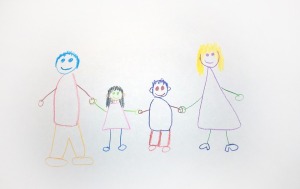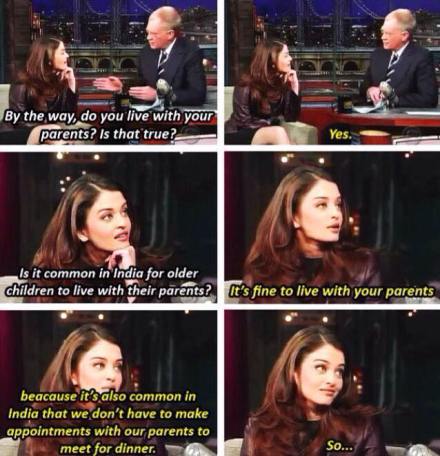When you think of the word « family », what do you picture? A mother, father and their children? How do you imagine them living? Maybe in a three bedroom house in the suburbs?
In the culture we live in, we receive many messages about what is normal and what is not. Even in our classes, we are told what is pathological, and what is not. For instance, we tend to have a model of a nuclear family – two parents and their children. We imagine that the children all have their own rooms. That they stopped breastfeeding at six months. That they will move out of the family house almost as soon as they are legally adults.
But what do we base these ideas on?
While these things are normal in our WEIRD (western, educated, industrialized, rich and democratic) cultures, they are not universal.
And while living with these norms, it can be hard to realize that many of them are fairly recent.
For example:
Western cultures see « family » as the nuclear family, a unit founded by a couple. This model evolved with the industrialized economy of the recent past, with the man being the breadwinner and the woman taking care of the children. This family is mobile, and supposedly adapted to our social structure.
But in other cultures, the whole ‘extended’ family is seen as the same family. It’s not uncommon for three or more generations to live under the same roof, or in the same neighborhood. This allows for other family members to help with childcare, to share resources and social support. While it’s not necessarily wrong, will we really defend that a model that forces us now to pay for strangers to look after babies and very young children as being the only definition of normal?
We are also frequently told that it is abnormal to breastfeed a baby for longer than six months to a year (certain authors warn us of the dangers – babies will not learn how to speak! They will be spoiled!)
Yet it’s easy to see that this view as being very ethnocentric. The World Heath Organization recommends 2 years of breastfeeding. Various countries around the world average 18, 20, 24 months… And a few, like Bangladesh, even reach an average of 33 months. So can we really say that this is a marker of unhealthy family relationships?
In the same vein, parents sleeping in the same bed or even bedroom as their children isn’t accepted here. We’re given dire warnings of unresolved Oedipus complexes… But this norm is hardly innate. Due to practical factors (lack of space, lack of heating…) families have been sleeping in the same room, even in the same bed, for centuries. Even in Europe, it’s only very recently that being able to have separate beds and bedrooms started to be seen as a sign of wealth, then normalized and spread. Co-sleeping is widely practiced in many African and Asian countries. Some argue that due to the developmental stage at which babies are born (far more prematurely that most other species), this practice is favorable. And there isn’t much proof that sleeping alone leads to more independent children. Research shows that children who share a room with their parents are more self-reliant and socially independent in preschool. As purely anecdotal evidence, co-sleeping is the norm in Japan, where children might share a room even up to primary school, and yet they start going to school alone far earlier, and are also far more self reliant (dressing themselves, folding their school uniforms, taking care of their belongings) than many children here.
And finally, in our fairly individualist society, we find it normal for children to leave the family home in their early 20s, or as soon as they finish school. While in many countries, children might live with their parents well into adulthood, this norm is being challenged even in western countries, as economic situations make it harder for young people to buy their own homes.
So many things are not fixed. Now, our society is evolving again. People started massively challenging gender norms a few decades ago. Women started working, leaving the home. Families of divorce became less unusual. MOGAI (Marginalized Orientations, Gender Alignments, and Intersex, also known as LGBTQIAP+) rights have also been an important movement, and the widespread legalization of same-sex marriage could be leading to yet another change in what we see as a typical family.
We are also facing other issues. We have already have some time to study all the problems and differences that can happen with adoption – now what about IVF? Surrogate mothers? How will new technologies and social changes influence how families work?
How will we face all these changes? Will we pathologize them, accept them, reject them, embrace them? Will we only view them though the lens of our current model of the family, trying to find out « who is the mom » and « who is the dad » in a family where this model doesn’t apply?
Maybe if we are able to remember how diverse families are, even now, we might avoid what I see as a trap. We might be able to accept that not everything fits into the boxes we create, and that that’s ok.
After all, who are we to decide what is normal and what is not?





